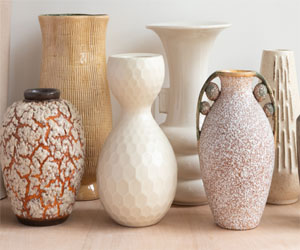


A Step-By-Step Guide
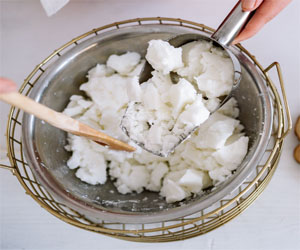
Candle making is a fascinating craft that has been practiced for centuries. What might seem like a simple endeavor actually involves a delicate balance of artistry and science. The process of creating candles from scratch can be an immensely rewarding and meditative experience. In this step-by-step guide, we'll explore the fundamental stages of the candle making process, from choosing materials to achieving that perfect, soothing glow.
Gathering Materials
The first step in the candle making process is to gather all the necessary materials and tools. This typically includes wax (common options are paraffin, soy, or beeswax), a double boiler or microwave for melting the wax, a thermometer, wicks, fragrance oils, and candle dyes if you want to add color. It's essential to ensure that your workspace is clean and well-ventilated for safety.
Melting The Wax
Once you have all your materials ready, it's time to melt the wax. This can be done by using a double boiler or a microwave. If using a double boiler, place the wax in the top pot and heat it gently until it becomes a liquid. If using a microwave, cut the wax into smaller pieces, place it in a microwave-safe container, and heat it in short bursts until it's fully melted. It's crucial to monitor the temperature of the wax using a thermometer to prevent overheating, which can be dangerous.
Adding Fragrance And Color
If you want to create scented and colored candles, this is the stage to do so. Add fragrance oils to the melted wax and stir thoroughly to ensure an even distribution of the scent. Similarly, add candle dye to achieve your desired color. The amount of fragrance and dye you use will depend on the type and brand, so consult the instructions provided with your supplies.
Preparing The Wick
While the wax is still liquid, it's time to prepare the wick. Cut the wick to the desired length, making sure it's a couple of inches taller than your chosen container or mold. Secure the wick in the center of the container or mold using a wick holder or adhesive. Ensure the wick remains straight and centered as the wax cools and solidifies.
Pouring The Wax
Carefully pour the melted wax into the container or mold, ensuring it surrounds the wick. Be patient and pour slowly to minimize air bubbles and achieve a smooth, even surface. Leave a small reserve of melted wax for topping off the candle later.
Cooling And Solidifying
Allow the candle to cool and solidify. The cooling process can take several hours, so be patient. If you notice a depression forming around the wick as the wax cools, use the reserved wax to top off the candle, ensuring a level surface.
Trimming The Wick
After the candle has fully cooled and hardened, trim the wick to about a quarter of an inch above the surface. This ensures a clean and safe burn when you light the candle.
Enjoy Your Creation
Once your candle is trimmed and ready, it's time to enjoy the soothing glow and delightful fragrance. Homemade candles make for wonderful gifts, beautiful home decor, and an artful expression of your creativity.
The candle making process is a beautiful blend of art and science, where creativity meets precision. Crafting candles from scratch allows you to personalize your candles with scents and colors of your choice, resulting in unique and enchanting creations. Whether you're a seasoned candle maker or a beginner, the joy of lighting a candle you've crafted with your own hands is a deeply gratifying experience that can become a cherished hobby.

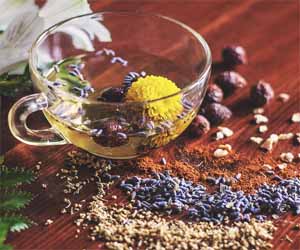
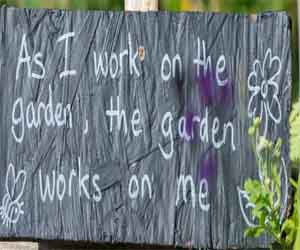
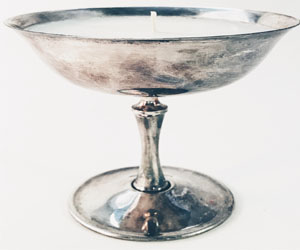


Crafting Creativity And Fulfillment
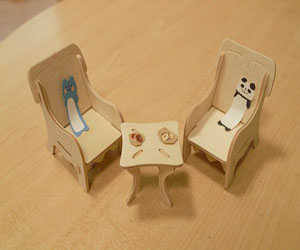 Sense Of Accomplishment: There's a profound sense of accomplishment that comes with completing a woodworking project. The act of seeing your vision take shape, from the initial design to the final finished piece, is incredibly rewarding. It builds confidence and self-esteem, and each project serves as a tangible testament to your skills and dedication.
Sense Of Accomplishment: There's a profound sense of accomplishment that comes with completing a woodworking project. The act of seeing your vision take shape, from the initial design to the final finished piece, is incredibly rewarding. It builds confidence and self-esteem, and each project serves as a tangible testament to your skills and dedication.
Learning And Growth: Woodworking as a hobby is a journey of continuous learning and growth. It's an opportunity to acquire new skills and techniques, from mastering joinery methods to understanding different types of wood. The learning curve is steep, but the journey is part of the joy, as you gradually progress from simple projects to more complex creations.
Shaping Civilizations From Clay
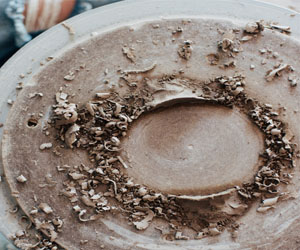 Neolithic Advancements: The Neolithic period (circa 10,000 to 2,000 BCE) marked a significant leap in the history of pottery. During this time, humans developed agriculture, leading to the need for more efficient food storage and preparation. This spurred the refinement of pottery techniques and the introduction of pottery wheels for shaping clay. Various cultures worldwide, from ancient China to Mesopotamia, independently discovered pottery and ceramic techniques that would continue to evolve over the millennia.
Neolithic Advancements: The Neolithic period (circa 10,000 to 2,000 BCE) marked a significant leap in the history of pottery. During this time, humans developed agriculture, leading to the need for more efficient food storage and preparation. This spurred the refinement of pottery techniques and the introduction of pottery wheels for shaping clay. Various cultures worldwide, from ancient China to Mesopotamia, independently discovered pottery and ceramic techniques that would continue to evolve over the millennia.
Egypt And Mesopotamia: Two of the world's earliest advanced civilizations, Egypt and Mesopotamia, played pivotal roles in the history of pottery. In ancient Egypt, pottery was not only used for practical purposes but also for religious and artistic expression. The Egyptians produced ornate and finely glazed ceramics, including funerary objects and sculptures.
In Mesopotamia, the cradle of civilization, clay tablets were employed for writing, while pottery was used to store and transport valuable commodities. The invention of the potter's wheel in this region revolutionized ceramic production and allowed for greater consistency and intricacy in design.
Greek And Roman Contributions: The Greeks elevated pottery to an art form. Their beautifully painted pottery, featuring intricate designs and intricate depictions of daily life and mythology, are now highly sought-after by collectors and historians. Greek pottery remains an enduring legacy of their artistic achievements.
The Romans continued the tradition of fine ceramic work, adopting Greek influences and creating their own distinctive styles. Roman pottery production was highly organized, and their ceramics were traded and exported throughout the vast Roman Empire.
Nurturing Nature And Your Garden
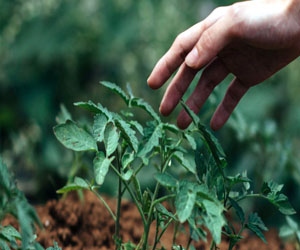 The Essence Of Sustainability In Herb Cultivation
The Essence Of Sustainability In Herb Cultivation
Sustainable herb cultivation involves growing herbs in a manner that minimizes environmental impact, conserves resources, and promotes long-term garden health. This approach takes into consideration the entire lifecycle of the garden, from planting and maintenance to harvest and beyond.
Sustainable Herb Cultivation Practices
Organic Gardening: The foundation of sustainability in herb cultivation is organic gardening. Avoid synthetic pesticides and fertilizers, opting instead for natural and organic alternatives. This practice ensures that your herbs are free from harmful chemicals.
Water Conservation: Use water wisely by installing efficient irrigation systems like drip hoses or soaker hoses. Collect rainwater for irrigation to reduce dependence on municipal water supplies.
Composting: Create your compost heap to recycle kitchen scraps and garden waste. Compost enriches the soil, reduces the need for synthetic fertilizers, and minimizes landfill waste.
Crop Rotation: Implement crop rotation techniques to prevent soil depletion and minimize the risk of herb-specific diseases. Rotating herbs within your garden beds maintains soil health and vitality.
Beneficial Insects: Attract and support beneficial insects like ladybugs, bees, and butterflies. These insects help with pollination and natural pest control in your herb garden.
Stitching Timeless Craftsmanship
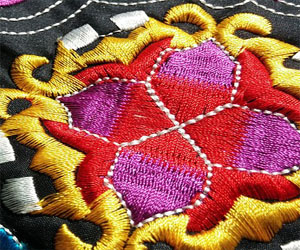 Historical Roots: The origins of traditional needlework can be traced back centuries, with evidence of embroidered textiles dating as far back as the ancient Egyptians and Chinese dynasties. Throughout history, women (and men) have used their skills in needlework to embellish clothing, linens, and decorative items, often showcasing cultural motifs and symbols unique to their regions.
Historical Roots: The origins of traditional needlework can be traced back centuries, with evidence of embroidered textiles dating as far back as the ancient Egyptians and Chinese dynasties. Throughout history, women (and men) have used their skills in needlework to embellish clothing, linens, and decorative items, often showcasing cultural motifs and symbols unique to their regions.
A Cultural Tapestry: Traditional needlework is a rich tapestry that weaves together the customs, beliefs, and aesthetics of different cultures. From the vibrant colors of Mexican embroidery to the delicate stitches of Japanese sashiko, each style carries a piece of its cultural heritage. It's a means of preserving and passing down the stories of a community, one stitch at a time.
Family Heirlooms: One of the most beautiful aspects of traditional needlework is its role in creating family heirlooms. Hand-embroidered tablecloths, quilts, and samplers have been cherished and passed down through generations, connecting the past with the present and ensuring that the skills and artistry of ancestors live on.
Crafted With Love And Sustainability
 Uniqueness And Personalization
Uniqueness And Personalization
DIY upcycled gifts are unique and personalized. Each creation is one-of-a-kind, reflecting the maker's individual style and the recipient's preferences. Whether it's upcycled jewelry, a hand-sewn bag, or repurposed decor, the inherent charm of these gifts is in their distinctiveness.
Endless Possibilities
The possibilities for DIY upcycled gifts are virtually limitless. Some popular ideas include turning vintage teacups into candles, transforming old windows into picture frames, crafting planters from used containers, and creating tote bags from discarded clothing. With a little imagination and resourcefulness, the sky's the limit.
Getting Started With DIY Upcycled Gifts
Gather Materials: Start by collecting the materials you'll need for your chosen project. This may involve hunting for discarded items, vintage finds, or materials you already have at home.
Choose The Right Project: Select a DIY project that aligns with the recipient's tastes and needs. Consider their hobbies, interests, and the occasion.
Learn Techniques: If you're new to upcycling, research and familiarize yourself with the necessary techniques for your chosen project. There are numerous online tutorials, books, and resources available.
Personalize Your Creation: Add a personal touch to your upcycled gift. You can do this by incorporating the recipient's favorite colors, adding custom designs, or incorporating a heartfelt message.
Safety First: Be mindful of safety precautions, especially when working with tools, paints, or materials that may have sharp edges or require special handling.
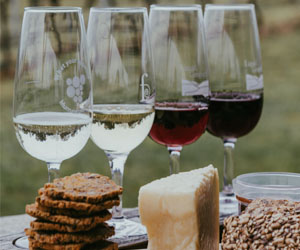 Taste And Smell: The sense of taste and smell are closely intertwined, working together to create the flavors we savor in our favorite foods and beverages. These senses have the power to evoke powerful memories and emotions. The aroma of a homemade apple pie might transport you back to your grandmother's kitchen, while the taste of a particular wine could remind you of a special celebration.
Taste And Smell: The sense of taste and smell are closely intertwined, working together to create the flavors we savor in our favorite foods and beverages. These senses have the power to evoke powerful memories and emotions. The aroma of a homemade apple pie might transport you back to your grandmother's kitchen, while the taste of a particular wine could remind you of a special celebration.
Touch: Our sense of touch allows us to experience a wide range of sensations, from the warmth of sunlight on our skin to the comforting embrace of a loved one's hug. This sense plays a fundamental role in our connections with the world and the people in it.
Sight: Sight is often considered the dominant sense, and it's not hard to see why. The world is a visual symphony of colors, shapes, and patterns. Our sight helps us navigate the world, appreciate art and beauty, and communicate with one another through facial expressions and body language.
Hearing: The sense of hearing is a gateway to the auditory world, from the laughter of friends to the soothing sounds of nature. Music, in particular, has the power to evoke profound emotions and transport us to different times and places.
Emotional Impact: Sensory experiences have a profound emotional impact on our lives. They can make us feel joy, nostalgia, awe, or even a sense of tranquility. A simple scent or a familiar tune can trigger memories and emotions, creating a bridge between the past and the present.
Finding Clarity In A Noisy World
 Personal Growth: By contemplating your life and experiences, you can set goals, make plans, and track your progress more effectively. Quiet reflection is a valuable tool for personal development and self-improvement.
Personal Growth: By contemplating your life and experiences, you can set goals, make plans, and track your progress more effectively. Quiet reflection is a valuable tool for personal development and self-improvement.
Now, let's explore how to incorporate quiet reflection into your daily life:
Set Aside Time: Schedule specific time each day for quiet reflection. This could be as brief as a few minutes or longer, depending on your preferences and availability.
Choose A Peaceful Environment: Find a quiet and comfortable place where you won't be disturbed. It might be a corner of your home, a park, or a quiet room in your workplace.
Disconnect: Put away electronic devices during your reflection time. Turn off notifications and resist the urge to check your phone, emails, or social media.
Breathe: Start your reflection with deep, calming breaths. This simple exercise can help you relax and transition into a state of mindfulness.
Journal: Consider keeping a reflection journal. Write down your thoughts, feelings, and insights during your quiet moments. Journaling can help you track your progress and clarify your thinking.